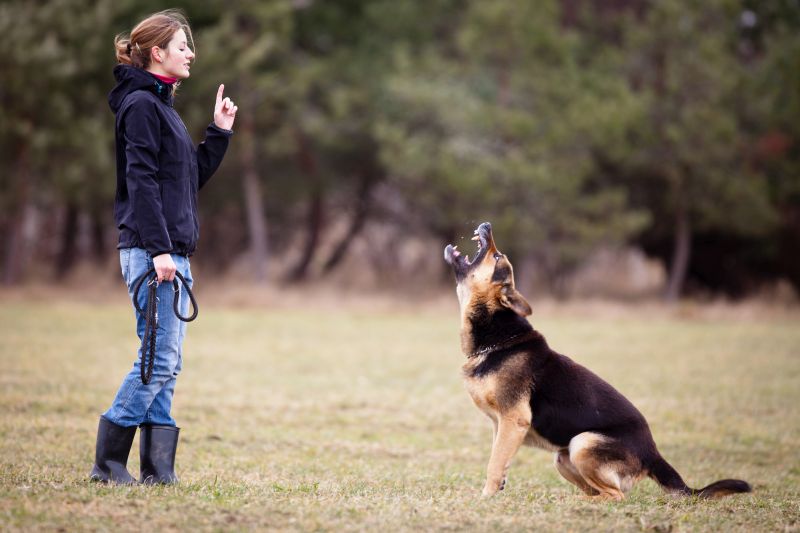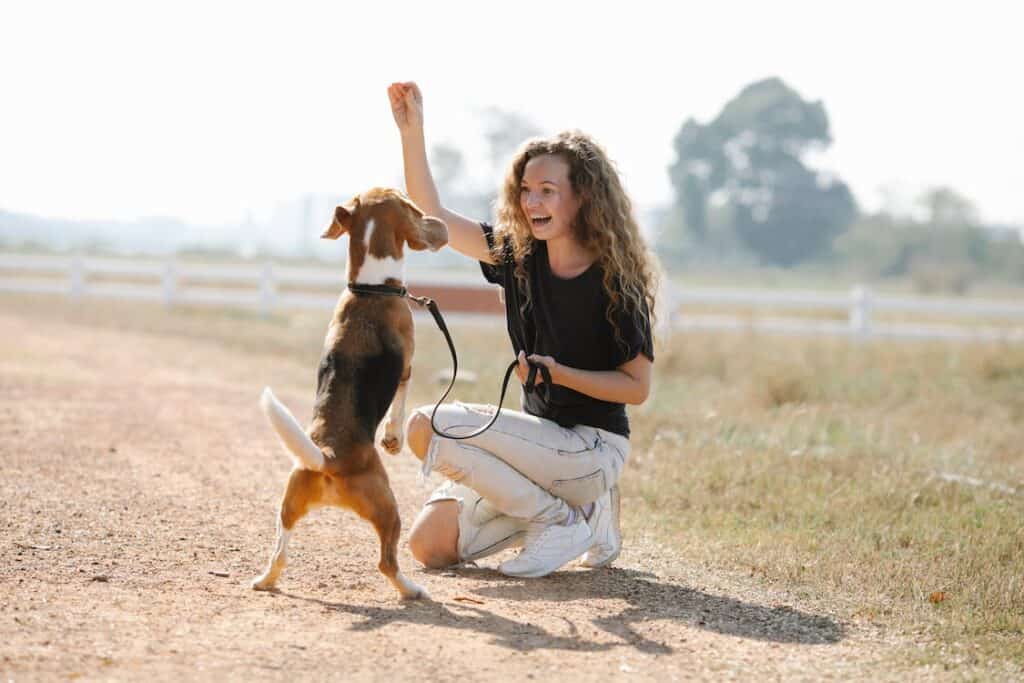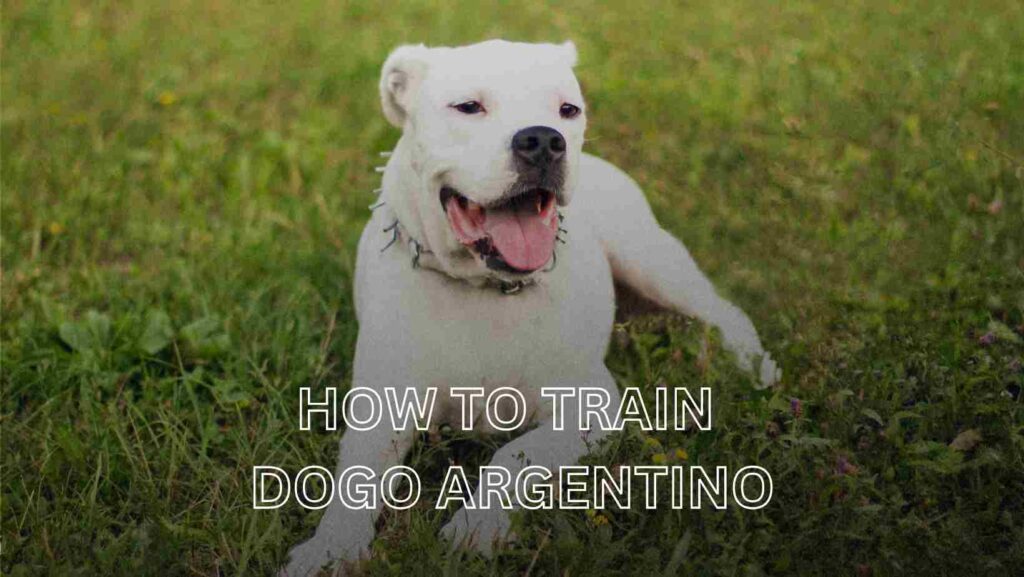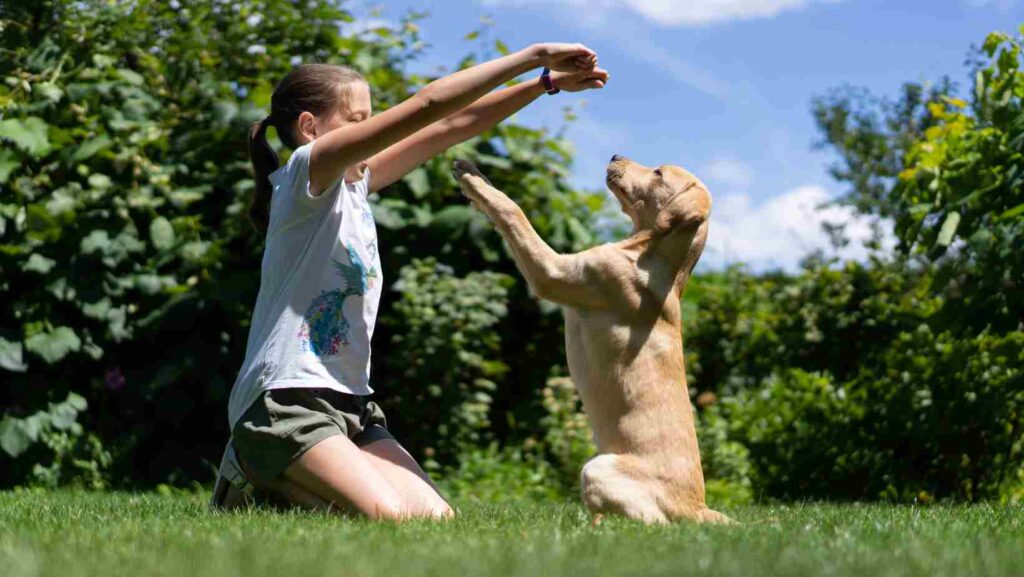Introduction
IF you are a dog owner and you training a dog can be a challenging task, especially if the dog is not as smart as you had hoped. However, training a “dumb” dog is not impossible, and with the right techniques and patience, you can turn your furry friend into a well-behaved and obedient companion. In this article, we’ll explore some tips and tricks for how to train a dog that may not be the brightest bulb in the box.
- Introduction
- 1- Understanding Your Dog’s Intelligence
- 2- Setting Realistic Training Goals
- 3- Creating a Positive Training Environment
- 4- Consistency is Key
- 5- Using Positive Reinforcement Techniques
- 6- Using Clicker Training
- 7- Teaching Basic Commands
- 8- Teaching More Advanced Commands
- 9- Avoiding Punishment-Based Training Techniques
- 10- Incorporating Training into Everyday Activities
- 11- Socializing Your Dog
- 12- Training for Specific Needs
- 13- Common Training Mistakes to Avoid
- Conclusion
- FAQs
Best guide for How to Train a Stupid Dog
When it comes to how to train a dumb dog, some breeds are naturally more intelligent and easy to train than others. However, if you have a dumb dog that is not as quick on the uptake, it doesn’t mean you should give up on training altogether. By following some of the tips and techniques outlined in this article, you will stop saying “my dog is too dumb to train” and you can train your dumb dog to how to behave appropriately and respond to your commands.

1- Understanding Your Dog’s Intelligence
Dogs are often classified as either smart or dumb based on their ability to learn new tricks and follow commands. However, this oversimplifies the complex nature of dog intelligence. In this section, we will explore the myths and realities of dog intelligence and the factors that can affect a dog’s ability to learn.
Myths and Realities of Dog Intelligence
One common myth is that certain breeds are inherently smarter than others. While some breeds may be more inclined to excel in certain tasks, such as herding or hunting, intelligence is not solely determined by breed. In fact, a dog’s intelligence is shaped by a variety of factors, including genetics, environment, and training.
Another myth about “How to train a small dog” is that dogs that learn quickly are smarter than those that require more time and effort to train. However, this is not necessarily the case. Some dogs may need more time and patience to learn a new behavior, but this does not mean they are less intelligent.
Factors Affecting a Dog’s Ability to Learn
Several factors can affect a dog’s ability to learn, including their age, health, and temperament. Puppies have a shorter attention span and may need more frequent breaks during training sessions. Older dogs may have physical limitations that affect their ability to perform certain tasks. A dog’s temperament, including their level of motivation and energy, can also impact their ability to learn.
Assessing Your Dog’s Intelligence and Trainability
To assess your dog’s current level of intelligence and trainability, it is important to observe their behavior and responses to training. Some signs of intelligence include problem-solving skills, adaptability, and the ability to learn from past experiences. However, even if your dog seems less intelligent than others, this does not mean they cannot learn and improve.
By understanding the myths and realities of dog intelligence, as well as the factors that can affect a dog’s ability to learn, you can better tailor your training approach to your dog’s unique needs and abilities.
2- Setting Realistic Training Goals
When setting training goals for your dog, it’s important to keep them realistic and achievable. Start with basic commands such as sit, stay, come, and down, and gradually work your way up to more complex tasks. Don’t expect your dog to learn everything at once, and don’t get discouraged if progress is slow. Patience and consistency are key to successful training.
3- Creating a Positive Training Environment
Creating a positive training environment is crucial for your dog’s success. Find a quiet and distraction-free area to train your dog, where they can focus on you and the task at hand. Use positive reinforcement techniques, such as treats and praise, to reward your dog for good behavior. Avoid using punishment-based techniques, which can be counterproductive and cause anxiety in your dog.
4- Consistency is Key
Consistency is key when it comes to training your dog. Use the same commands and reward system each time you train your dog, and ensure that everyone in your household is using the same training methods. This will help your dog to understand what is expected of them and make training more effective.
5- Using Positive Reinforcement Techniques
Positive reinforcement techniques are the most effective way to train a dog. When your dog performs a desired behavior, reward them with treats, praise, and affection. This will reinforce the behavior and encourage your dog to repeat it in the future. Avoid punishing your dog for unwanted behavior, as this can be counterproductive and cause anxiety.
6- Using Clicker Training
Clicker training is a popular positive reinforcement technique that uses a clicking sound to indicate to your dog that they have performed a desired behavior. Clicker training can be used to teach a wide range of commands, from basic to advanced. To start clicker training, you will need a clicker and some treats.
7- Teaching Basic Commands
Teaching basic commands is an essential part of training your dog, and it’s a great place to start if you have a “dumb” dog. The most basic commands to teach your dog are sit, stay, come, and down. Use positive reinforcement techniques, such as treats and praise, to encourage your dog to perform the desired behavior. Be patient and consistent, and practice the commands daily until your dog has mastered them.
8- Teaching More Advanced Commands
Once your dog has mastered the basic commands, you can move on to more advanced commands. Some advanced commands to consider include heel, leave it, and drop it. Again, use positive reinforcement techniques to encourage your dog to perform the desired behavior. Be patient and consistent, and practice the commands daily until your dog has mastered them.
9- Avoiding Punishment-Based Training Techniques
Punishment-based training techniques, such as hitting or yelling at your dog, are not only ineffective, but they can also cause anxiety and fear in your dog. Instead, use positive reinforcement techniques to encourage good behavior. Reward your dog with treats and praise when they perform the desired behavior, and ignore or redirect unwanted behavior.
10- Incorporating Training into Everyday Activities
Incorporating training into everyday activities is a great way to reinforce good behavior and make training more enjoyable for your dog. For example, you can practice the “sit” command before your dog’s meals or use the “stay” command before opening the door to go outside. This will help your dog to understand that training is part of everyday life.
11- Socializing Your Dog
Socializing your dog is an essential part of their development, and it can help to prevent unwanted behaviors such as aggression and anxiety. Socialization involves exposing your dog to new people, places, and experiences in a controlled and positive environment. Start socializing your dog as early as possible, and be patient and consistent.
12- Training for Specific Needs
If your dog has specific needs, such as assistance with mobility or anxiety, you may need to tailor your training techniques accordingly. Consult with a professional trainer or veterinarian to develop a training plan that is safe and effective for your dog’s specific needs.
13- Common Training Mistakes to Avoid
There are several common training mistakes that dog owners make, such as inconsistency, punishment-based training techniques, and setting unrealistic goals. To avoid these mistakes, be patient and consistent, use positive reinforcement techniques, and set realistic training goals.
Conclusion
Training a “dumb” dog may require more patience and persistence than training a highly intelligent dog, but it is not impossible. By using positive reinforcement techniques, creating a positive training environment, and being patient and consistent, you can train your dog to behave appropriately and respond to your commands. Remember to set realistic training goals and avoid punishment-based training techniques to ensure the best possible outcome.
For more details you may contact us at contact@readaboutpet.com or at Pinterest.
FAQs
How long does it take to train a dumb dog?
Training time can vary depending on the dog’s breed, age, and temperament. Some dogs may learn basic commands in a few weeks, while others may take several months to master them.
What are some common training mistakes to avoid?
Some common training mistakes to avoid include inconsistency, punishment-based training techniques, and setting unrealistic goals.
Is punishment-based training effective?
Punishment-based training techniques are not effective and can cause anxiety and fear in your dog. Positive reinforcement techniques are the most effective way to train a dog.
Can you train an older dog?
Yes, you can train an older dog. It may take more time and patience, but it’s never too late to start training your dog.








